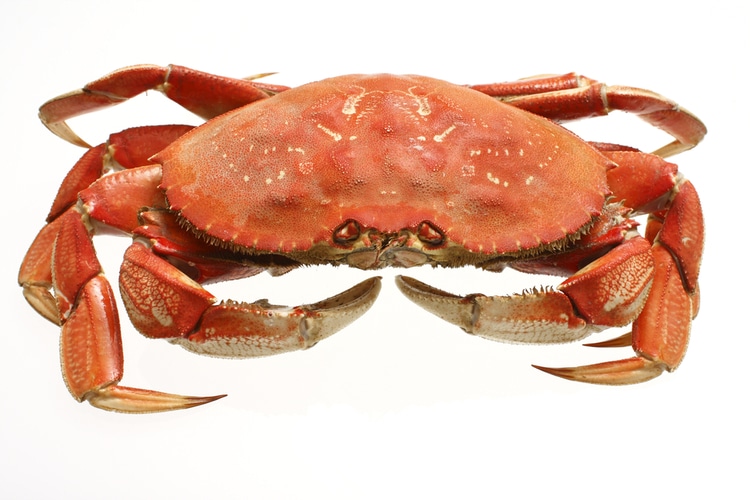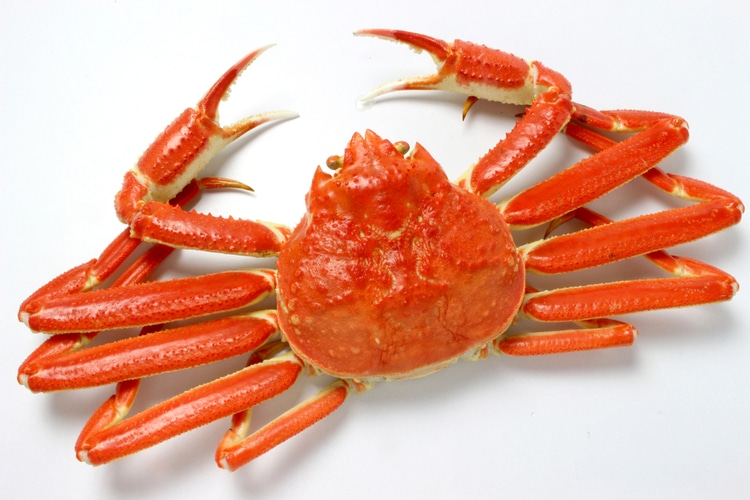There are over 4,500 species of crab in the world, and many of them are enjoyed by different cultures when it comes to creating delicious delicacies. However, some crab varieties are more well-known than others – including Dungeness crab and snow crab.
While they certainly aren’t the only two varieties making it into American kitchens and restaurants, they’re among the most popular. But, can they be used interchangeably? What are the differences between Dungeness crab and snow crab, and how should you be using them in your cuisine?
Difference Between Dungeness and Snow Crab
The main difference between these two crabs is their leg size. Dungeness crabs have thinner and smaller curved legs, whereas snow crabs have “meatier” legs.
That means Dungeness crabs provide less meat within a single crab even though they contain more meat per weight, at twenty-five percent of their weight being from meat alone. When it comes to snow crabs, their meat only makes up about 17% of their body weight.
In terms of taste, Dungeness crabs are sweeter compared to the mild flavor of snow crabs. But, that doesn’t mean snow crabs lack taste. If you want to get the most flavor out of them, go for the leg meat over what’s found in the body. It tends to have a more intense taste!
Dungeness crabs are more common and widely available all year round in various locations like Alaska, Washington, Oregon, and Canada. They are always in season, whereas the snow crab is only in season from April to the beginning of November.
If you were to sit down to a plate of each crab, you’d notice a stark difference between the “crackability” and durability of their shells. Dungeness crabs have harder, thicker shells than snow crabs.
When you’re eating Dungeness crabs, specialized tools are needed to crack their hard shells, especially when it comes to the claws.
You will need crab claw clamps to crack them open without hurting your fingers! Snow crabs, on the other hand, have thinner shells that can easily be opened by hand. It’s a messy and delicious experience.
Dungeness crabs and snow crabs are prepared very similarly, typically by being cooked in boiling water in only about five minutes. They can also be steamed in a steamer basket or with a colander insert, baked while wrapped in heavy-duty foil, or boiled in a combination of butter and water.
Dungeness vs Snow Crab Comparison Table
| Dungeness Crab | Snow Crab | |
| Size | Approximately 1.5 – 2 lbs | Approximately 2 – 4 lbs |
| Appearance | Four short legs and two claws | Four long legs and two claws |
| Habitat | Off the coast of Alaska, Canada, California, Oregon, and Washington | Cold to temperate waters located in the northwestern Atlantic Ocean and the northern Pacific Ocean |
| Season | Alaska: from mid-June to September Washington and Oregon: from December to August Canada: All year, especially in May, June, September, and October | From April to the beginning of November |
| Taste | Moderate sweetness | Mild sweetness |
| Shell Durability | The shells of these crabs are hard and thick, thus special tools are needed to crack them | The shells of these crabs are thin, meaning they can be cracked by hand |
| Price | $25 per lb | $35 per lb |
Can You Substitute Dungeness for Snow Crab?
If you are cooking with crab meat, you may be wondering if you can substitute Dungeness crab for snow crab or vice versa. The answer depends on why you are choosing to substitute them, what exactly you are using them for, and how they are being cooked.
One thing to consider when deciding whether one can be replaced for the other is that when it comes to Dungeness crabs, the meat of the body is what is preferred since their legs are so small, whereas the meat of the legs is preferred for the snow crab because their legs are so long.
Because claw and leg meat generally have a more intense flavor than the meat of the body, you may be more inclined towards using snow crabs in this situation.
Snow crabs are also not as sweet as Dungeness crabs, which have a relatively notable but delicate sweetness to them. This is an important factor when considering if they are substitutable, as the sweetness will affect whatever recipe you are preparing.
If you are less concerned with the part of the body the meat is coming from and more concerned with flavor, you might be more able to substitute these crabs for one another, even though Dungeness crabs are sweeter in taste. That can usually be dealt with by adjusting other ingredients in your recipe.
What Is Dungeness Crab?

Named after Dungeness Bay in England, the place they were originally discovered, Dungeness crabs live mostly in sandy habitats on the coasts of Alaska, Oregon, Washington, and Canada.
Dungeness crabs have wide and oblong bodies and short, curved legs. They can weigh up to ten pounds and can grow as much as ten inches across or more.
Male and female Dungeness crabs are not the same size, with females typically being three times as large as males. Male varieties typically also have a much narrower body, so fishermen are always more interested in the females.
In general, Dungeness crabs weigh on average two to four pounds, with twenty-five percent of that weight being from meat alone. Dungeness crabs are rich in vitamin B12, B6, niacin, riboflavin, copper, magnesium, phosphorus, selenium, and zinc.
Dungeness crabs are also the most commercially important crab in the Pacific Northwest. They don’t have a typically long lifespan, with the average crab living about 10 years. So, fishermen have to be careful not to pull crabs that are too young from the water so they can mature and develop in size and flavor.
How to Use Dungeness Crab
You should always pay attention to the color of the shell of a Dungeness crab when making your selection, which will have a characteristic opaque gray color.
Also, take note of whether your Dungeness crab is male or female, as they will have different flavors. A male Dungeness crab has firmer and sweeter meat than its female counterparts.
The way to identify whether your Dungeness crab is male or female is by observing the crab bib. The bib of a female Dungeness crab is larger.
Although you should avoid buying pre-cooked crab, when purchasing a Dungeness crab that has already been cooked, be sure to purchase one with all of their legs, because missing legs indicates that the crab has been overcooked. Those crabs will have tougher meat that is more difficult to remove from their shells.
As far as how to prepare Dungeness crab, you can use it in anything from crab cakes to pasta and from casseroles to salads. Its light flavor will compliment almost any traditional seafood dish.
Keep in mind, however, that it will take a bit of work to crack through your crab, so you might not want to use it in recipes that call for large quantities of crab meat.
What Is Snow Crab?

Snow crab is named after the color of its meat, which is snow white. Snow crabs are found in colder and more temperate climates and they tend to hang out in deep and cold water conditions.
Snow crabs have short and round bodies and long, thick legs that range from 3.7 inches on female snow crabs to the 6.5-inch legs of male snow crabs. In general, male snow crabs tend to be twice as large as their female counterparts.
Snow crabs are low in fat and rich in Omega-3 polyunsaturated acids which aid against heart disease and help brain development. Snow Crabs are also a good source of Vitamin B12, phosphorus, zinc, copper, and selenium.
Unlike the twenty-five percent of weight found in the meat of the Dungeness crab, only seventeen percent of the snow crabs’ weight comes from meat.
How to Use Snow Crab
When choosing your snow crab, be sure to choose one with lots of raised dark spots on the shells. These dark spots indicate that this crab is mature and has lived a longer life, meaning the meat will be firmer and tastier than those with smoother shells.
The crab cover will also be firm and sturdy when squeezed and assessed. The best high-quality snow crabs come from the Gulf of St. Lawrence. But, these snow crabs will also be more expensive.
Be prepared to pay a little extra for quality – you won’t regret it once you get your crabs home and cook them. Be sure to check for broken pieces and excess glaze. The industry standard for broken pieces is about ten percent.
When it comes to using your snow crab, they can be eaten in salads, casseroles, pasta dishes, or as a fun main ingredient in a classic seafood boil.
You can use your hands to crack the shells, simply boiling or steaming the crabs and serving them with corn, potatoes, and lots of drawn butter is one of the best ways to enjoy their sweet flavor.






